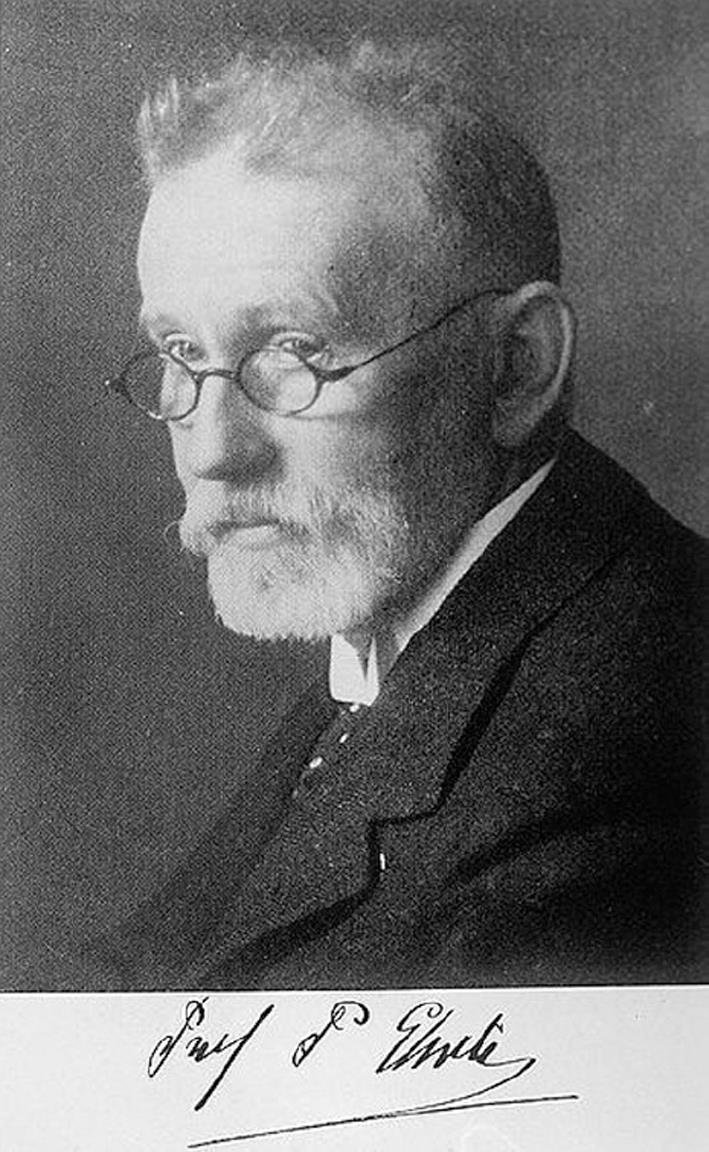Copyright
©2013 Baishideng.
Figure 7 Paul Ehrlich (1854-1915).
Paul Ehrlich was born on March 14, 1854 at Strehlen in Silesia (Germany). Educated at the Gymnasium at Breslau and subsequently at the universities of Breslau, Strassburg, Freiburg-im-Breisgau and Leipzig, he obtained his doctorate of medicine in 1878 by means of a dissertation on the theory and practice of staining animal tissues. In 1882 he published his method of staining the tubercle bacillus that Koch had discovered. This method was the basis of the subsequent modifications introduced by Zhiel and Neelson and of the Gram method of staining bacteria. In 1882 Ehrlich became Titular Professor and in 1887 he qualified as a Privatdozent in the faculty of medicine in the University of Berlin. Later he became an Associate Professor and Senior House Physician to the Charité Hospital in Berlin. After becoming Robert Koch’s assistant in 1890, he began immunological studies. He worked out the details of preparing an antitoxin for diphteria, which represented the first use of immunotherapy to specifically treat an infection. In 1896 he was appointed Director of the Institute for the control of therapeutic sera at Steglitz in Berlin, and formulates his side-chain theory of immunity. In 1897 Ehrlich was appointed Public Health Officer at Frankfurt-am-Main and in 1899 became director at the Royal Institute of Experimental Therapy. He then began another phase in his varied researches and devoted to chemotherapy with the aim to find chemical substances which have special affinities for pathogenic organisms and would be “magic bullets” which would go straight to the organisms at which they were aimed. He produced trypan red and established the correct structural formula of atoxyl effective against tryptosomes. This open the way of obtaining new organic compounds with trivalent arsenic. One arsenic drug was found very effective against syphilis. Ehrlich announced it under the name of “Salvarsan”. Another arsenical substance named “Neosalvarsan” became more easily administered. During the later years of his life, Ehrlich was concerned with experimental work on tumors and on his view that sarcoma may develop from carcinoma, also on his theory of athreptic immunity of cancer. In 1908 he shared with Metchnikoff the highest scientific distinction, the Nobel price. On August 20, 1915 a stroke ended his life.
- Citation: Thomas X. First contributors in the history of leukemia. World J Hematol 2013; 2(3): 62-70
- URL: https://www.wjgnet.com/2218-6204/full/v2/i3/62.htm
- DOI: https://dx.doi.org/10.5315/wjh.v2.i3.62









